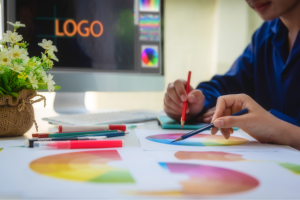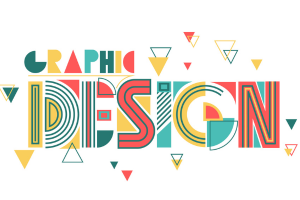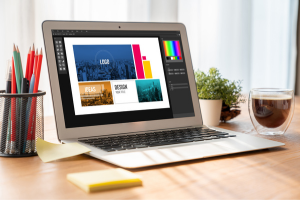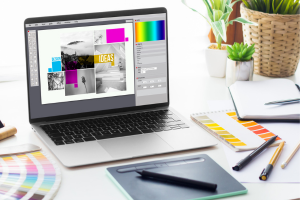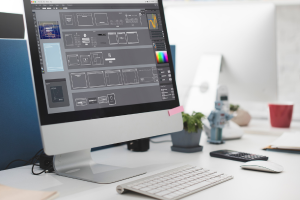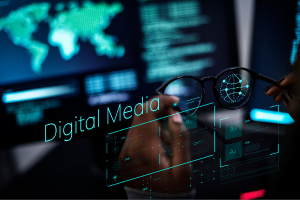The world of design keeps on transforming at a quick pace of change, and logo branding proves to be an important aspect of brand identity. By the beginning of 2025, businesses need to comply with new trends since the competition to make a mark is becoming fierce. It does not matter whether you are a startup or an old brand; following the trends in logo branding is a must in staying connected and remembered among your audience.
Here are the top 10 logo branding trends you should not miss out on in 2025:
1. Minimalism with a Twist
For some years now, minimalism has been an accepted design trend, hence keeping up to an almost steady pace into 2025. However, currently, it isn’t all about taking everything away but rather simple design with an edge.
A few elements can be trusted to keep their message best without any extra clutter or chatter. A minimalist logo is timeless, scalable, and versatile. The twist is a clever negative-scaling setting, low-key gradients, and high-tech typography that breathe personality into the design.
Example: Apple and Nike are prime examples of minimalist logo branding that’s instantly recognizable and adaptable across different platforms.
2. Bold Custom Typography
In 2025, custom typography will remain a mark of unique logo branding. Rather than resourcing a generic font, the brands invest in custom typefaces, which reflect their character and values.
A custom font can help to make the logo a notch above others and offer flexibility so brands can differentiate themselves from competitors. From exaggerated letterforms to playful curves, the boldness of the typography can exude confidence and make the logo more unforgettable.
Example: Coca-Cola and Disney, for example, are brands with custom typography that have become synonymous with their identities and attest to the power of a distinctive font in logo branding.
3. Responsive Logos
With the growth of engagement across various devices and screen sizes, responsive logos are fast becoming a necessity. In 2025, it would be expected that companies would have an adaptable logo regardless of whether it is on a mobile phone, tablet, desktop, or even a billboard.
Responsive logos are created to be in a position to scale and be legible on any size: for instance, a heavy logo design may need to become simple for the small screen while keeping a strong sense of its identity as a brand. Thus, one can be sure that the logo will work and be recognizable on all sites.
Example: Responsive logos: Logos that work on business cards and large-scale ads: FedEx and Target.
4. Eco-conscious and sustainable design
With an ideological shift in sustainability, it is now regarded as a core value of consumer perspectives. By predicting the future, branding will be redefined by sustainable means in the years of 2025. Consequently, designs will be full of greenery and nature beats.
Green shades, earthy colors, and elements of leaves, water, and mountains would promote sustainability for the brand. The design may be varied with textures and patterns to appear as close to whatever an organic entity looks like and, so, is nature-inspired. Logos that convey environmental friendliness will ensure credibility to consumers as well as appease the mindset of the eco-friendly movement.
Example: Patagonia and Whole Foods incorporate earthy tones and natural elements in their branding, reinforcing their commitment to sustainability.
5. Geometric Shapes and Symmetry
These will be widely used in logo makers in 2025: Logos featuring geometric shapes and symmetry. Order, equilibrium, and precision are created by these logos, which appeal to the consumers with an appreciation for structure and clarity.
Simplicity is often one of the best features of geometric logos; they can be reproduced across different media easily. They can enhance an image of modernity and professionalism, while sharp lines and angles create a strong visual impact.
Example: Adidas and Pepsi exemplify their use of geometry and symmetry to create symbols that are priceless and timeless.
6. Gradient Color Palettes
After a long period of keeping in the background due to the unfortunate aspects of their perception, gradients can make a huge comeback in 2025. A gradient that has been thoughtfully employed enhances the depth of a logo and the dynamic feel. Today, developments in digital design tools have greatly improved the polish and smoothness of gradients such that they do not pose any difficulty when applied to large and small scales.
Gradients are used to suggest innovation and energy in logo branding. They can also provide a seamless transition from one complementary color to another, if multiple colors are used. Especially in the tech and creative industries, this trend works.
Example: Instagram has taken this at its most extreme with its gradient logo, and this continues to be considered among the designs most closely associated with digital branding.
7. 3D Logos and Depth
With the ongoing advancement of technology, logos in 2025 will increasingly become 3D, creating the impression of depth and realism. With the introduction of shadowing, texture, or even motion, brands can now make logos interesting and engaging.
They will present a whole new interactive experience to consumers through virtual reality (VR) and augmented reality (AR), which have already become popular.
Example: The 3D logo of Google’s virtual reality platform, Google Cardboard, serves as a clear example of how depth and dimensionality can enhance a brand’s identity.
8. Dynamic Logos with Animation
In 2025, animated logos will become ubiquitous. The swath of video content being uploaded to social media means that animated logos are fast becoming a must-have for brands needing to secure their relevance. Such logos not only grab the attention of the audience but also enable a larger scope for visual engagement while conveying the brand’s narrative.
Conceivably, the logo may either move slightly or proceed through an entire animation sequence, giving attraction and excitement all along. Animated logos reflect a current trend that casts a wider net within logo branding toward dynamic and malleable designs that transform and develop over time.
Example: An animated logo, such as the ones Pixar uses and HBO’s animated logos, indicates the effect of motion on truly breathing life into logos in ways that still designers cannot manage.
9. Vintage and Retro Styles
Nostalgia is a potent emotion, and vintage and retro styles will continue to be hugely in vogue in 2025, taking logo branding further back into time. Brands will lean on the classic appeal of designs popularized during the ’70s, ’80s, and ’90s, employing colors that pop with some cultural nostalgia felt in fonts and imagery that elicit the warm fuzzies.
Such logos exploit consumers’ emotions and conjure memories of things, products, and brands they have come in contact with. Brands that want to engender trust, stimulate the remembrance of fond memories, or want to be perceived as an “it-could-be-something-great” brand that conforms to the time will naturally drift toward being retro.
Example: Coca-Cola’s vintage logo has for decades been the symbol of its brand, accentuating the timelessness that elicits nostalgia.
10. Personalized Logos
Consumers will increasingly be in quest of personal experiences in 2025, and logo use will be one way in which such individuality will manifest itself. Such logos are designed to speak to their target audience, mainly integrating elements that are specifically for certain demographic groups, values, or preferences.
Examples of personalized logos would include links to localized design elements or connections to cultural, regional or personal identities. In this way, the brands can establish a more powerful bond with their audiences by showing an understanding of their needs and desires.
Example: Localized logos, for example, of regions are just one imaginative way by which a brand can localize itself in the personalized line of branding.
Conclusion
Hence, logo branding is evolving into an exciting phase in 2025, as brands need to understand the modern consumer and portray enticing logos that will lure buyers towards them while remaining within. Minimalistic logos, 3D logos, and sustainable branding are a few of the avenues in which logos can be created to captivate the attention of today’s audience.
It can be inferred that, by using those 10 best trends in logo branding, brands can create memorable and impressive logos that can withstand the tests of time while remaining relevant to an ever-changing digital landscape. So, whether you’re designing a fresh logo or refreshing an existing one, 2025 will be the year for breaking the mold of creativity and pushing design boundaries.

